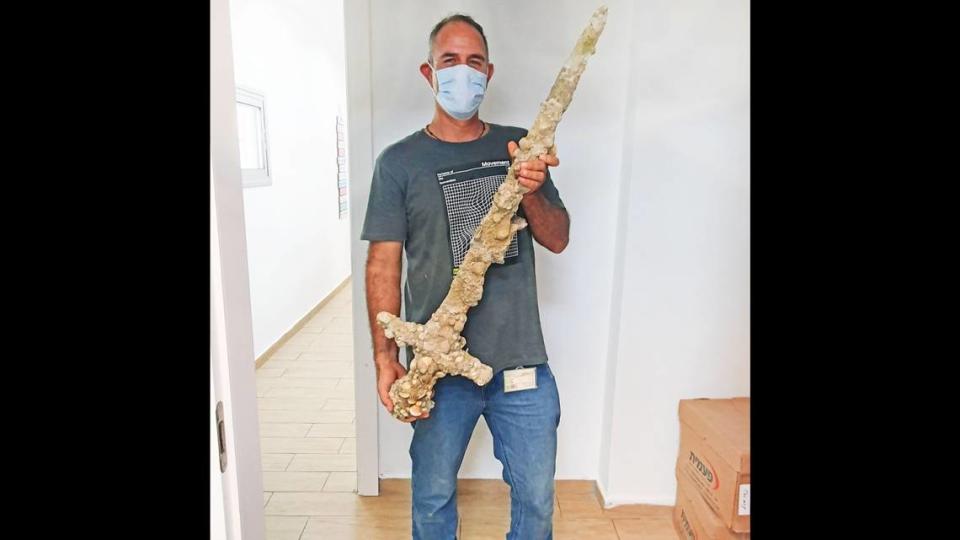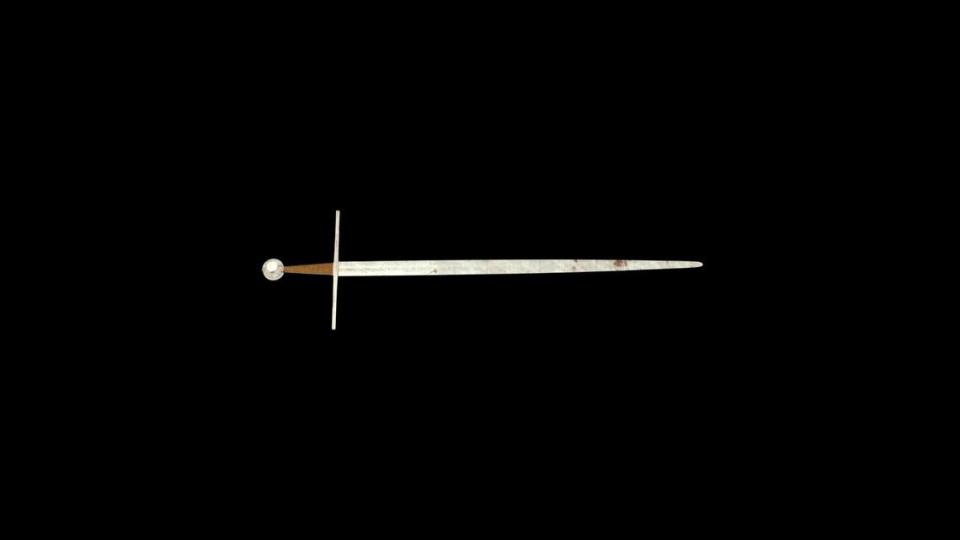800-year-old sword was found in Mediterranean Sea. Now experts know how it got there
In the midst of a raging naval battle, a more than 3-foot-long sword was flung overboard. It settled in the sandy floor of the Mediterranean Sea — and that’s where it stayed for at least 800 years until it was discovered by divers in 2021.
Or at least that’s the narrative experts with the Israel Antiquities Authority have decided on, according to a July 23 Facebook post.

Over the past several centuries, the iron sword developed a crust of sand and shells, preventing experts from examining the metal itself without damaging the weapon, the post said. Instead, researchers used X-rays and radiography technology to penetrate the thick layers of marine concretion and get a view of the original sword.
“It is unfortunate that we can’t see the sword as it was,” researchers said, according to the Facebook post. “On the other hand, the concretion is responsible for slowing down the oxidation process, preserving the sword in its entirety. Otherwise, the iron would have rusted and disintegrated in the water.”
The X-ray findings were published in the July 2023 edition of the Israel Antiquities Authority’s journal, ‘Atiqot. Here’s what to know about the latest findings:
A rare medieval weapon
Researchers said the sword dates to the late medieval period, sometime between 1000 and 1500 C.E., and tentatively identified it as European. Specifically, experts associated it with a Frankish settlement.
The sword’s blade is just under 3-feet long and nearly 2-inches wide, according to the study. The cross guard, which researchers described as plain and straight, is a bit more than 1-foot long. The handle is 4-inches long and 1-inch wide.

Experts used the sword’s medium length blade and longer cross guard to identify its age, the study said. Unlike earlier and later weapons, late medieval era swords were designed for stabbing and slashing, with a medium blade and wide cross guard for increased protection during sword-on-sword combat.
The sword is a rare discovery, according to researchers and officials. Medieval European-style swords are scarce and none have been excavated. Those that have been identified can typically not be dated.
A battle casualty
X-ray imaging revealed that the sword’s blade was bent, indicating that it was likely used during a naval battle about 800 years ago, according to the Facebook post.
“The sword was used by a Crusader warrior who settled in the country after the First Crusade and established the Kingdom of Jerusalem in 1099,” Jacob Sharvit from the Israel Antiquities Authority said in the post.
“The sword was part of a knight’s or warrior’s personal equipment. It was the main weapon in face-to-face combat in those days,” Joppe Gosker, another Israel Antiquities Authority researcher, said in the post.
In addition to its bent blade, researchers noted that the sword was found outside of its scabbard — a protective sheath that covers the weapon’s blade —which is unusual.
“Being expensive, swords are usually found within a scabbard. In this case, only the sword was found. From this, we can infer that it fell into the sea during a battle, possibly with its owner,” the researchers said, according to the Facebook post. “We didn’t find any additional remains in our scans of the place, but who knows? The warrior may still lie undiscovered in the depths, to be revealed one day by the shifting sands.”
The Crusader Frankish period started with the “conquest of Jerusalem” in 1099, the antiquities authority said. After that, efforts turned to conquering coastal cities, leading to relationships with Pisa, Venice and other Italian republics which used their naval authority to attack “Muslim coastal cities.”
Experts said the sword may have been on an Italian ship laying siege on a coastal city, or it could have belonged to a knight on his way home to Europe.
Newe-Yam is about 50 miles north of Tel Aviv.
Metal detectorist picks up signal in Romania — then unearths almost 5,000 ancient coins
Someone hid a ‘small fortune’ 500 years ago and never returned. It was just discovered
3,000-year-old royal tombs unearthed in Cyprus. See the bountiful riches inside

